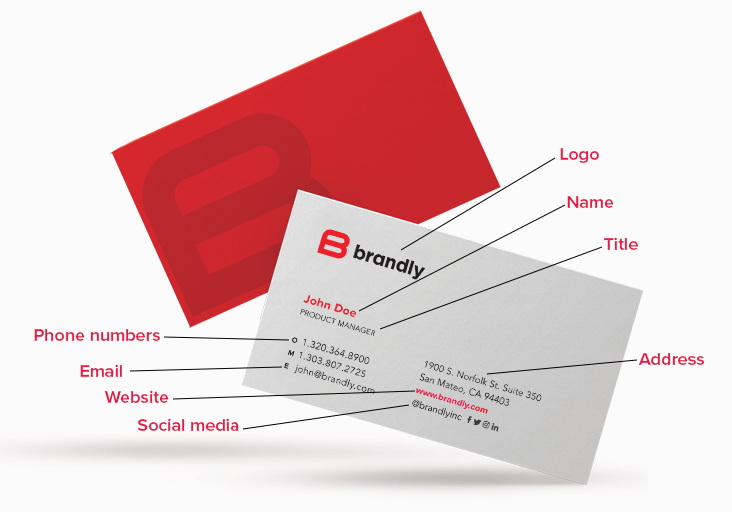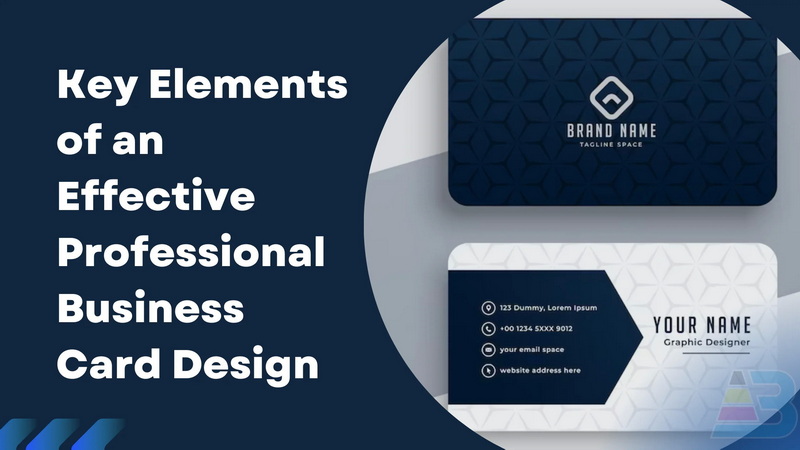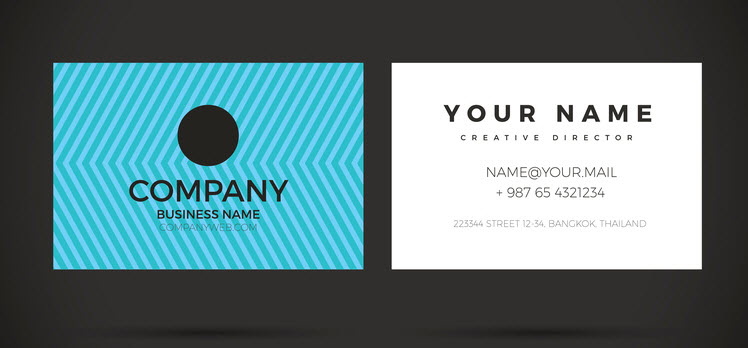Content Menu
● Essential Information to Include
● Optional but Valuable Elements
● Design Considerations
● Best Practices for Business Cards
● Common Mistakes to Avoid
● The Importance of Business Cards in Today's Digital World
● Customization Options for Business Cards
● Conclusion
● Related Questions
>> 1. What is the primary purpose of a business card?
>> 2. How many colors should I use on my business card?
>> 3. Should I include my photo on my business card?
>> 4. What size should my business card be?
>> 5. Is it necessary to have both sides printed?
● Citations:
Business cards are essential tools for networking and establishing professional connections. They serve as a tangible representation of your brand, providing key information about you and your business. In this comprehensive guide, we will explore the critical elements to include on a business card, design considerations, best practices to ensure your card leaves a lasting impression, and additional insights into the significance of business cards in today's digital world.

Essential Information to Include
When designing your business card, it's crucial to include specific information that helps recipients identify you and your business quickly. Here's a breakdown of the essential elements:
- Name: Your full name should be prominently displayed. This is the first piece of information people look for when they receive your card.
- Job Title: Including your job title helps clarify your role and expertise within the organization. This is particularly important in larger companies where many employees may have similar names.
- Company Name: The name of your business should be clearly visible. If applicable, include the company logo for brand recognition.
- Contact Information: This includes:
- Phone Number: A direct line or mobile number is essential for quick communication.
- Email Address: Ensure that your email is professional and easy to read.
- Website URL: Directing people to your website can provide them with more information about your services or products.
- Physical Address: If you operate from a physical location, including the address can be beneficial, especially for local businesses.
Optional but Valuable Elements
While the above elements are essential, there are additional components that can enhance your business card's effectiveness:
- Tagline or Slogan: A short phrase that encapsulates what you do or represents your brand can make your card more memorable. For instance, a real estate agent might use a tagline like "Turning Dreams into Reality."
- Social Media Handles: If relevant, include links to professional social media profiles like LinkedIn or Twitter. This allows recipients to connect with you online and see more about your professional background.
- Logo: A well-designed logo can help establish brand identity and make your card visually appealing. Consistency in branding across all platforms reinforces recognition.
- Photo: Including a professional photo can add a personal touch and help recipients remember you better, especially in networking situations where they may meet multiple people.
Design Considerations
The design of your business card is just as important as the information it contains. Here are key design considerations:
- Layout: Choose a layout that balances text and white space effectively. Avoid cluttering the card with too much information. A clean design is often more appealing.
- Font Choice: Use clear, legible fonts. Stick to one or two font types to maintain consistency and professionalism. Avoid overly stylized fonts that may be difficult to read.
- Color Scheme: Select colors that align with your brand identity. Ensure there is enough contrast between text and background for readability. For example, dark text on a light background is generally easier to read than light text on a dark background.
- Material Quality: The quality of the paper stock can impact how your card is perceived. Thicker cards often convey a sense of professionalism and durability compared to flimsy cards.
- Finish Options: Consider special finishes like matte, glossy, or spot UV coating to enhance visual appeal and tactile experience. A matte finish may give a sophisticated look, while glossy finishes can make colors pop.
Best Practices for Business Cards
To maximize the effectiveness of your business cards, follow these best practices:
- Keep It Simple: Avoid overcrowding the card with excessive information or graphics. Focus on key details that facilitate contact while maintaining an appealing aesthetic.
- Double-Sided Cards: Utilize both sides of the card if necessary. You can place essential contact information on one side and additional details or services on the other without overwhelming one side.
- Proofread: Ensure all information is accurate and free from typos before printing. A mistake can undermine professionalism and lead to confusion.
- Use High-Quality Printing Services: Invest in quality printing services that offer various customization options to ensure a polished final product. Online printing services often provide templates that can help streamline this process.

Common Mistakes to Avoid
When creating business cards, be mindful of common pitfalls:
- Overloading Information: Too much text can overwhelm recipients. Stick to essential details only; less is often more in effective design.
- Ignoring White Space: White space enhances readability and allows important information to stand out without distraction from other elements on the card.
- Using Distracting Fonts or Colors: Ensure that fonts are readable and colors are complementary rather than clashing; this maintains professionalism and clarity.
The Importance of Business Cards in Today's Digital World
Despite living in an increasingly digital age where social media profiles and online networking platforms dominate, business cards remain relevant for several reasons:
- Tangible Connection: In-person meetings often leave a stronger impression when accompanied by a physical card. It provides something tangible for recipients to remember you by after an interaction.
- Networking Opportunities: Business cards facilitate networking opportunities at events where digital exchanges may not be feasible due to lack of internet access or technological barriers.
- Brand Representation: A well-designed business card serves as an extension of your brand identity, showcasing professionalism and attention to detail that digital platforms may not convey as effectively.
Customization Options for Business Cards
Customization options allow individuals and businesses to tailor their cards according to their unique branding needs:
- Shape Variations: Standard rectangular cards are common, but unique shapes (like rounded corners or custom die-cut shapes) can make your card stand out even more.
- Material Choices: Beyond standard cardstock, consider using materials like plastic, metal, or recycled paper for an eco-friendly touch that aligns with modern values.
- Interactive Elements: Incorporating QR codes that link directly to websites or portfolios adds an interactive element that bridges physical and digital interactions seamlessly.
Conclusion
A well-designed business card is a powerful tool for networking and establishing professional connections in today's fast-paced environment. By including essential information such as your name, job title, company name, contact details, along with optional elements like a tagline or logo, you can create an effective representation of yourself and your brand. Pay attention to design considerations such as layout, font choice, color scheme, material quality, and customization options to ensure that your business card leaves a lasting impression while effectively communicating who you are professionally.
In summary, even in our digital age where online interactions are prevalent, business cards continue to hold significant value as they foster personal connections and represent brand identity tangibly. Investing time in designing an effective business card could lead to fruitful relationships and opportunities down the line.

Related Questions
1. What is the primary purpose of a business card?
The primary purpose of a business card is to provide essential contact information in a compact format that facilitates networking and professional introductions.
2. How many colors should I use on my business card?
It's best to limit yourself to two or three colors that complement each other and align with your brand identity for a cohesive look.
3. Should I include my photo on my business card?
Including a photo can help personalize your card and make it more memorable, especially in industries where personal connections are vital.
4. What size should my business card be?
The standard size for a business card is 3.5 x 2 inches (89 x 51 mm), but you can opt for custom sizes if they align with your branding strategy.
5. Is it necessary to have both sides printed?
While not mandatory, using both sides allows you to include more information without overcrowding one side, making it easier for recipients to read.
Citations:
[1] https://www.indeed.com/career-advice/career-development/what-to-put-on-a-business-card
[2] https://shawngraham.me/blog/what-should-be-on-a-business-card-for-small-businesses
[3] https://www.gelato.com/blog/how-to-design-a-business-card-2024-guide
[4] https://www.reddit.com/r/UBC/comments/18fn9pb/how_long_does_it_take_you_guys_to_write_a_2500/
[5] https://blog.hubspot.com/marketing/the-ins-and-outs-of-writing-long-form-content
[6] https://www.writerscollegeblog.com/the-20-most-important-pointers-to-write-better-articles/
[7] https://www.gatewaydigitalpress.com/what-we-print/business-cards/business-card-faqs.html
[8] https://tapmo.in/blogs/news/faqs-about-business-cards-everything-you-need-to-know
[9] https://www.vistaprint.com/hub/business-card-design-rules
[10] https://www.colorfxweb.com/blog/the-11-parts-of-a-business-card/
[11] https://www.banana-print.co.uk/blog/business-card-info/
[12] https://capitalizemytitle.com/writing-time/2400-words/
[13] http://www.graphicdisorder.com/business-card-faq
[14] https://www.bannerbuzz.com/blog/8-key-questions-to-ask-before-buying-business-cards/
[15] https://www.primoprint.com/blog/10-crucial-parts-to-a-business-card-design/
[16] https://www.brandly.com/blog/what-to-put-on-a-business-card/
[17] https://www.4over4.com/content-hub/stories/top-10-tips-on-what-to-include-on-a-business-card
[18] https://www.swagify.com/blog/how-to-design-a-business-card/
[19] https://www.staples.com/sbd/cre/noheader/business-card-guide/designing-your-card/what-to-include
[20] https://www.reddit.com/r/smallbusiness/comments/p2xov6/what_do_i_write_on_my_business_card/
[21] https://www.printsafari.com/blog/10-things-to-be-included-in-your-business-cards/
[22] https://www.vistaprint.com/hub/business-card-information-essentials
[23] https://kylegoldie.com/what-to-include-and-not-include-on-your-business-cards/
[24] https://en.99designs.de/designer-resource-center/designing-business-cards
[25] https://www.vistaprint.com/hub/business-card-design-rules
[26] https://www.tactive.cc/business-card-essentials/
[27] https://sciencepod.net/how-to-write-a-good-article/
[28] https://www.snapagency.com/700-1800-2500-words-look-like/
[29] https://ucm.calpoly.edu/guidelines-newswriting
[30] https://pro-writer.com/write-article/
[31] https://libguides.derby.ac.uk/c.php?g=691079&p=4950560
[32] https://www.linkedin.com/pulse/how-write-article-six-step-guide-saahil-nair
[33] https://www.reddit.com/r/freelanceWriters/comments/rtiww7/what_are_some_tips_to_write_articles_faster_and/
[34] https://writing.stackexchange.com/questions/2300/how-many-words-hour-should-you-aim-for-when-writing-your-first-draft
[35] https://www.writingclasses.com/toolbox/articles/15-tips-for-writing-articles
[36] https://iimskills.com/10-practices-and-tips-for-good-article-writing/
[37] https://www.youtube.com/watch?v=TRwI0AxJo14
[38] https://indieessentials.co.uk/how-to-write-a-long-article-or-blog/
[39] https://ivypanda.com/essays/words/2400-words-essay-examples/
[40] https://www.jasper.ai/blog/long-form-content
[41] https://studycorgi.com/words/2400-words-free-essay-samples/
[42] https://smartpress.com/support/product-faq/business-card-printing-faq
[43] https://www.namecheap.com/visual/card-maker/faqs/
[44] https://www.absolutecp.co.uk/the-letterpress/important-questions-about-business-cards
[45] https://www.canr.msu.edu/od/communications_marketing/business-card-faqs
[46] https://www.printplace.com/articles/business-card-design-faq
[47] https://orchid.ganoksin.com/t/several-questions-about-business-cards/55622
[48] https://www.brandly.com/blog/questions-business-card-vendor/
[49] https://graphicdesign.stackexchange.com/questions/830/making-a-business-card-any-advice
[50] https://blog.marketmuse.com/an-idiot-proof-guide-to-long-form-content/
































